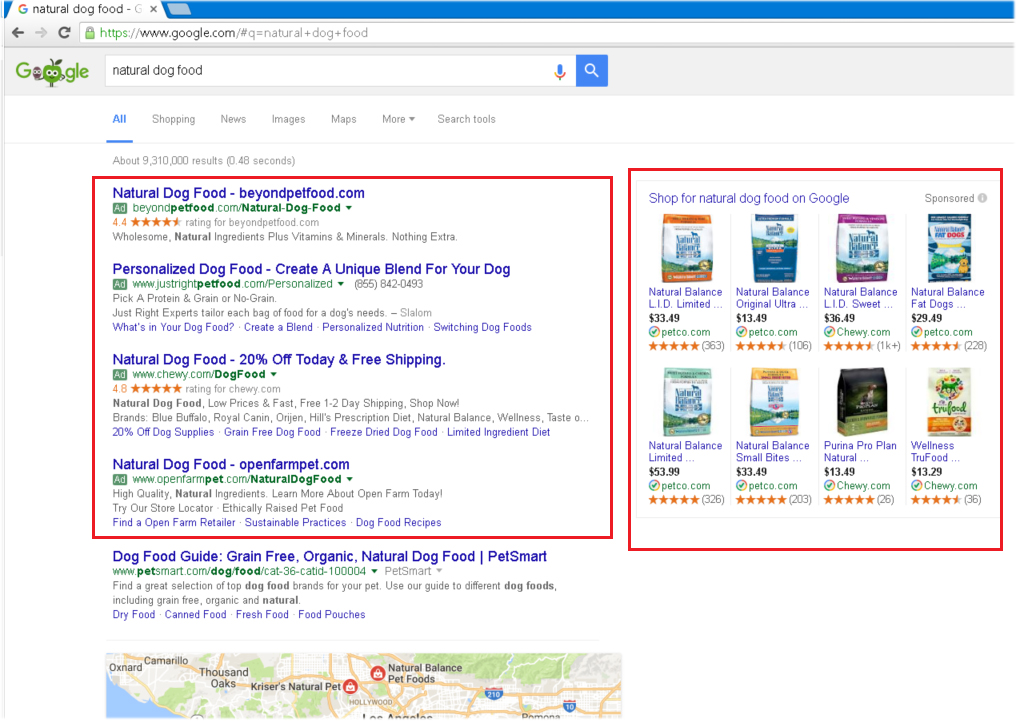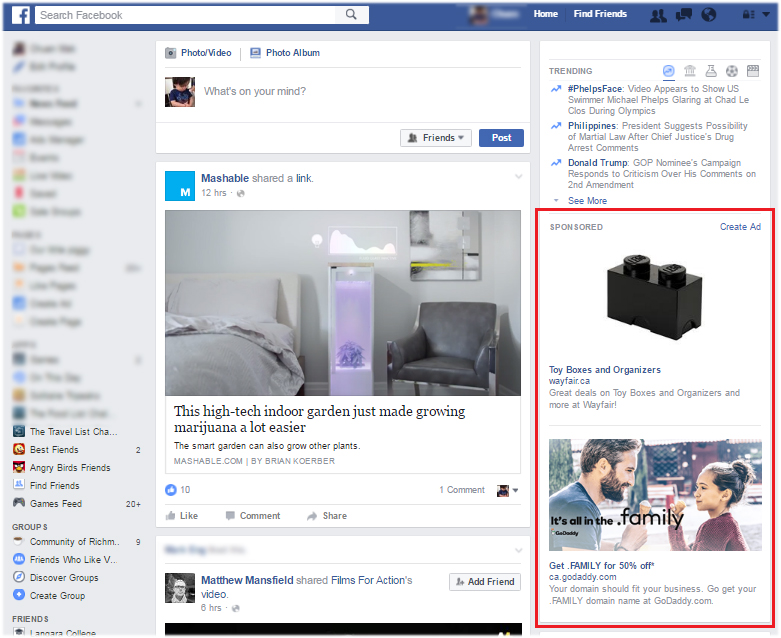Increase website traffic with paid advertising
There are many ways you can increase traffic on your website, including guest blogging, social media and paid advertising.
Guest blogging and social media are great ways to drive traffic to your website mainly because they are easy to understand and free to use.
Another effective way to increase traffic to your website is with paid advertising. In this article, we will:
- give you a brief overview of what paid advertising is
- help you establish a basic understanding of how it works
- look into the two types of paid advertising, PPI and PPC
- explain how Google AdWords and Facebook Ads can drive traffic to your website
What is paid advertising?
Paid advertising simply means buying traffic with online ads.
While guest blogging and social media are great ways to drive traffic to your website, it is not measurable and you are missing out on the biggest traffic source – search engines.
Let’s look at an example. Say, you’re searching for “natural dog food” on Google,

As you can see from the screenshot, ads are displayed above and on the right of the search results. These spaces are reserved for paid ads, making it attractive for website owners to pay Google to have their ads displayed in these spaces.
Advantages of paid advertising
Here are some of the reasons to integrate paid ads into your website marketing strategy:
- by displaying your ads in competitive space, it is a great way to expose your company’s name to a larger audience
- it is a quick way to drive relevant traffic to your website
- with all the targeting options available, even small budgets can produce great results
- results can be tracked and measured to provide you with a better picture of your ROI
- collected data can be used to help you find and target valuable keywords as well as learn more about your visitors’ behavior trends
Types of paid advertising
There are several types of paid advertising, and the two most common ones are Pay-Per-Click (PPC) and Pay-Per-Impression (PPI).
What is PPC?
PPC stands for “Pay Per Click.” It is often use interchangeably with CPC “Cost Per Click.” As the abbreviation PPC indicates, it is the amount of money you will pay every time a visitor clicks on your ad. Of course, The amount depends on what the ad is about and which platform you are using.
PPC is good when targeting search engine users – they are more susceptible to links that look like something they are searching for.
Google AdWords is one of the more popular PPC platform. Another one is Facebook Ads.
What is PPI?
PPI stands for “Pay Per Impression.” It is often used interchangeably with PPM (Pay Per thousand impressions) and CPM (Cost Per thousand impressions). As the abbreviations suggest, it is the amount of money you will pay to have your ad displayed a thousand times. Note that with this paid advertising method, you are paying for the ad to be displayed, not clicked.
PPC vs. PPI, which is better?
It is difficult to say if PPC or PPI is more effective, as both has their strengths and weaknesses.
PPI rates are usually more inexpensive and it is easy to apply a budget since you are only pay for a certain amount of views. PPI also guarantees that you ad will be shown the number of times you paid for it to be seen. However, it doesn’t measure how many people actually clicked on your ad.
On the other hand, PPC are very easy to track – people either did or did not click on your ad. With PPC, you only pay for the actual clicks. But at the same time, because you are competing with other advertisers for the same ad space, PPC can become an expensive bidding war.
Google AdWords
Now that we have a basic understanding of the two main types of paid advertising, let’s take a look at the biggest PPC platform: Google AdWords.
How does it work?
Using our “natural dog food” example above, when you type in a search, Google will yield two main types of search results: organic and sponsored. You will click on the most relevant result, and very often it will be one of the sponsored results because they are more targeted to the specific product you are looking for (in this example, natural dog food).
From the advertiser’s point of view, when a consumer clicks on their ads, the advertiser will be charged for that one click. Click prices vary depending on the keywords used to trigger the ads.
And of course, Google has a tool, Traffic Estimator Tool that helps you get an idea on how much your keywords will cost you per click on Google.
In other words, Google AdWords works by:
- You pick the keyword(s) or key phras(es) that you want your ad to show up for
- Consumer performs a search and Google digs into its pool of AdWords advertisers and chooses a set of winners to appear in the ad space on the search results page. The winners are chosen based on a number of factors, including the quality and relevance of the keywords and the size of their keyword bids (ie. the more you are willing to pay, the more likely you will be chosen as a “winner”).
- Consumer sees your ad on the search results page and clicks on it.
- Google bills you for that one click.
- If you want your ad to show up higher or more frequently then you will need to increase your bid on your keyword(s) and increase your daily ad spending budgets to allow for more clicks
- When you decide it’s time to stop paying for the keyword(s) then Google will take your ad offline.
Benefits of using Google AdWords
In addition to displaying your ads on the biggest search engine, Google AdWords also offers you different options and channels for your ads:
- AdWords lets you create text, image or video-based ads
- You can get very specfic in when your ad displays
- You get to choose where your ads are displayed – Google owns many other properties, such as Gmail and YouTube where you can place your ads
- If setting up and AdWord campaign is too advanced for you at this time, you can also consider starting out with simpler, fully-automated advertising program, Google AdWords Express
If you would like to learn more about Google AdWords, stay tuned for our upcoming article All about Google AdWords. For now, you can refer to Google Adwords website for more information and to sign up for an AdWords account.
Facebook Advertising
When you log into your Facebook account, you will see that Facebook uses the right column to display ads.

Facebook Ads work similar to traditional Pay-Per-Click advertising in that you only pay when someone clicks on your ad. But the great thing with Facebook Ad is that you can add an image or video along with your text. So even if people don’t click on your ad, you are still getting a lot of exposure for free and with hundreds of millions of users on Facebook, that’s a lot of exposure you can’t afford to ignore.
How does it work?
With Facebook, you can promote your Facebook Page or your website. Facebook ads are targeted to users based on their location, demographics, interests, and profile information. As we all know, many of these information are only available on Facebook. After you have created an ad, you will set a budget and bid for each click or thousand impressions that your ad will receive.
Users then see your ads in the sidebar on Facebook.com.
Benefits of promoting your business or website on Facebook
In a way, Facebook ads is a hybrid of Google AdWords and Google AdSense. Basically, Facebook allows you to target very specific demographics of Facebook users, including location, gender, age, interests, languages, and even behaviors (ie. their shopping behaviors, if they are in the market for a new car, etc.).
In fact, with Facebook’s Precise Interest Targeting, you can target users based on information in their profile including likes and interests, Pages they like, apps they use and other profile/timeline content they have provided.
In other words, you can target people similar to the ones who have already purchased your products and those who are fans of your competitors.
You can learn more about ad-targeting on the Facebook Ad website or stay tuned for our in-depth article “Advertising Your Website on Facebook”.